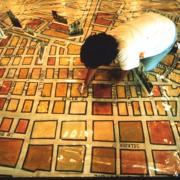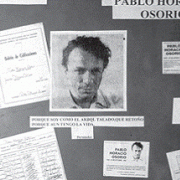Summary Available
Daily headlines around the globe portray the numerous conflicts that arise as a result of heated points of contention. Seemingly disparate ideologies, unequal distribution of resources, political, ethnic, cultural and religious differences can all be contributing factors in the emergence of conflict between groups. In the aftermath of conflict, what role can reconciliation play as a path forward; toward healing, peaceful relations, improved communication and functioning societies?
Where does the process of reconciliation begin, with whom and when? These questions and more were discussed in New Tactics in Human Rights Conversation - Reconciliation Post-Conflict: Approaches, Practices and Realities. This online conversation sought to identify the role of reconciliation in post-conflict environments. Practitioners shared experiences, lessons learned, approaches, and challenges with the reconciliation process from the perspective of reconciliation efforts around the world.


 Human rights activists as well as the museum community can make effective use of the spatial impact of historic sites to help educate people about social change and human rights. The Tenement Museum in New York City has joined with more than a dozen other institutions that have focused their attention on “sites of conscience”—places where terrible human rights abuse has occurred that should never be forgotten. Their goal is not only to remember the past, but also to use the emotional power of these places to catalyze critical thinking about the ongoing social issues of today, through dialogue and educational activities.
Human rights activists as well as the museum community can make effective use of the spatial impact of historic sites to help educate people about social change and human rights. The Tenement Museum in New York City has joined with more than a dozen other institutions that have focused their attention on “sites of conscience”—places where terrible human rights abuse has occurred that should never be forgotten. Their goal is not only to remember the past, but also to use the emotional power of these places to catalyze critical thinking about the ongoing social issues of today, through dialogue and educational activities. Documentary Heritage is a program of Memoria Abierta (Open Memory), whose goal is to improve the use of and access to the documentation stored in the institutional archives of participating human rights organizations. The Documentary Heritage Program seeks to make all of the documentation related to the period of state terrorism and its present consequences accessible for research and educational purposes, thereby increasing knowledge and contributing to a social conscience about what occurred in Argentina.
Documentary Heritage is a program of Memoria Abierta (Open Memory), whose goal is to improve the use of and access to the documentation stored in the institutional archives of participating human rights organizations. The Documentary Heritage Program seeks to make all of the documentation related to the period of state terrorism and its present consequences accessible for research and educational purposes, thereby increasing knowledge and contributing to a social conscience about what occurred in Argentina. 